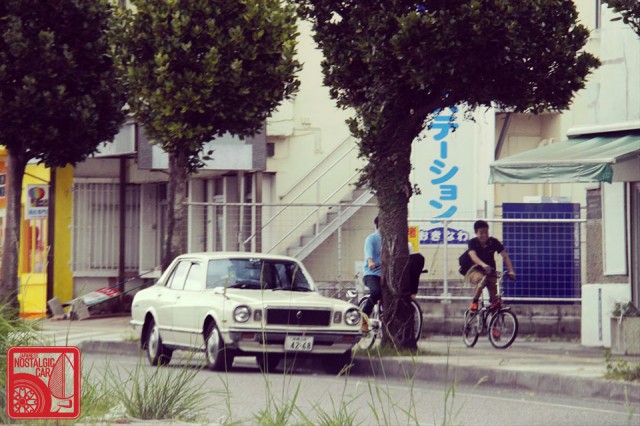
To Americans, the name Okinawa immediately conjures images of US military bases. However, the archipelago located south of Honshu, Japan’s main landmass, is also a popular subtropical tourist destination. Okinawa literally means “a rope in the open sea” and is comprised of a 600-mile chain of over 160 individual islands, only 49 of which are inhabited. But where there are people, there are cars.
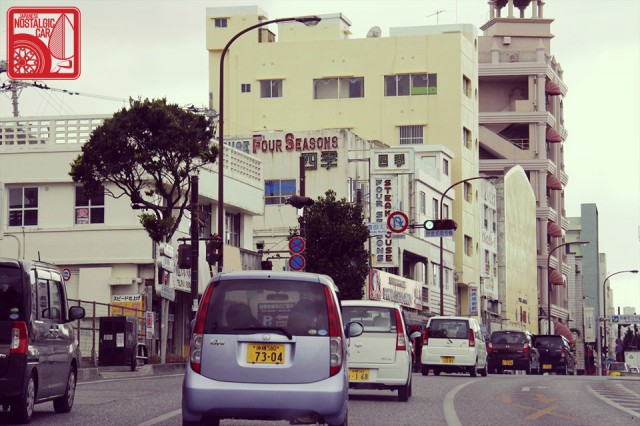
The most famous export of Okinawa is probably the art of karate, believed to be an evolution of kung fu due to the islands’ proximity to China. Okinawans are notoriously long-lived too, with several of the world’s oldest people hailing from the region. A Japanese friend of ours recently visited the ordinary, kei-car clogged streets of Okinawa, where the heavy influence of US bases has produced a plethora of English signs and a fairly unique car culture. Until the late 70s, cars even drove on the right side of the road, the opposite of everywhere else in Japan.
On Okinawa, one can dine at an A&W family restaurant, a franchise that was once prevalent in 1960s America but has all but vanished in recent decades. The first Japanese A&W opened in 1963, giving Okinawans the novelty of pulling up to an old school drive-in carport in a Honda S600 to order a teriyaki burger (as depicted in a photo on the company’s website). There are no A&Ws on mainland Japan.

Toyotas are as ubiquitous on Okinawa as they are everywhere else in Japan, but the local Toyota Rent-A-Car branches set their fleet apart by slapping a bright yellow sticker on all their vehicles. There’s a slight Hawaiian flavor to these decals, which are clearly meant for tourists from the mainland as they have no English. The car depicted on them appears to be a fifth-generation Corona.
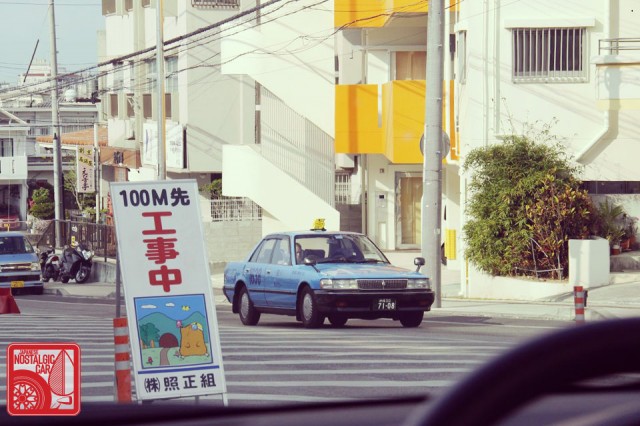
Cressida aficionados will be pleased to know that X80 Mark II taxis still run strong on Okinawa, fender mirrors and all. They are all but nonexistent on Hondo (what Okinawans call the rest of Japan. Hon means “original” and do means “land.”).
In Tokyo cabs are usually newer Crowns or Toyota Comforts, which also roam free on Okinawa. Toyota began building Comforts specifically for sale to taxi companies in 1995, but the cars are still heavily steeped in rear-wheel-drive tradition, offered in both floor- and column-shift manual transmissions.

Okinawa isn’t a particularly wealthy region of the country, so bus companies there often purchase used coaches from Hondo. Bus enthusiasts (yes, there is such a thing, and we spotted a magazine devoted to them at the Tokyo Motor Show last year) often visit Okinawa, not for its sunny beaches but for bus-spotting. Bus station signs and even emergency instructions found in school buses are printed in English. At one particular depot, an FJ65 Land Cruiser with an awesome 80s decal package lurked among the old motorcoaches.
Unlike the rest of Japan, Okinawa has no railroads. This is a bit of an anomaly that changes the region’s landscape a bit. Instead, a small monorail serves the capital city. Okinawa lacks a highway system as well, but there is a very old restaurant called Highway Drive-In.
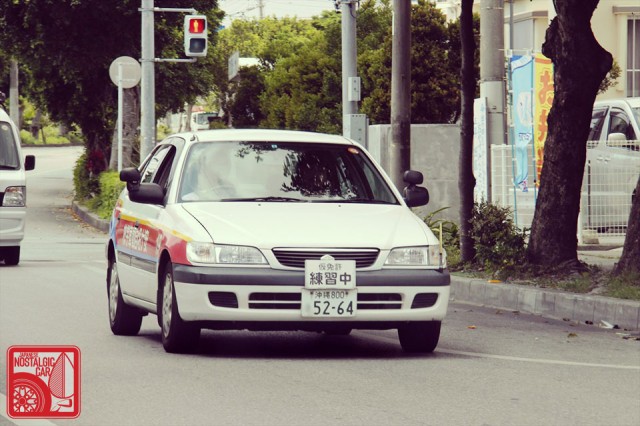
At 10:00 pm on July 29, 1978, all roads in Okinawa Prefecture were closed to traffic. Toiling through the night, workers changed signs, road markings and traffic signals. At 6:00 am the next morning, everything had been switched so that, henceforth, driving would take place on the left side of the road.
This T210 Toyota Corona is from a local driving school. Prior to the changeover, some driving instructors would travel to Hondo to practice driving on the left in order to be ready for new students after “Nana San Maru” Day (730 Day, July 30).
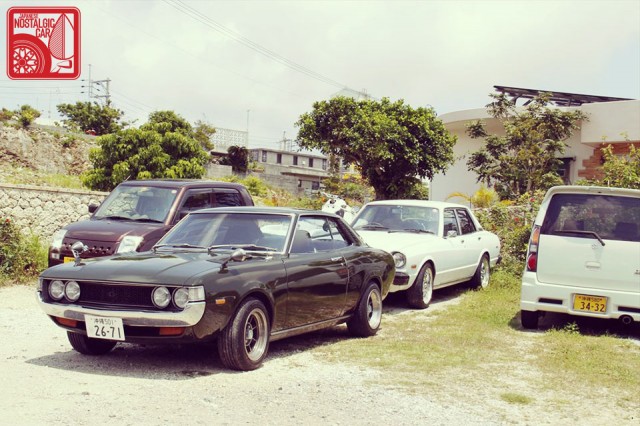
The salt from ocean moisture makes it difficult to keep classic cars on Okinawa. At a residence occupied by a Toyotaku, two gorgeous classic Toyotas were parked in front. The X30 Mark II could have been an original Okinawa car, but the daruma Celica on Hayashi Streets was clearly imported from Hondo. The giveaway is the steering wheel on the right. Prior to 730 Day, Japanese automakers sold left-hand-drive cars in Okinawa.
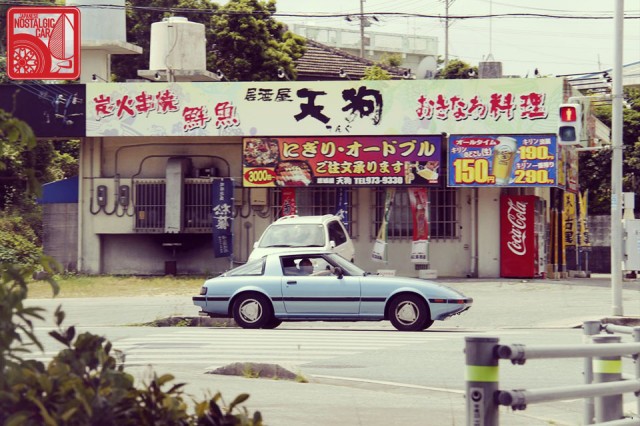
For example, this gorgeous Mazda Savanna RX-7 could very well have been an original-owner, left-hand-drive Okinawan car. These days, however, with a decent flow of nostalgics going back to Japan from the US and other LHD countries, it’s getting hard to tell. Regardless, its rotor wheels are bitchin’ though.












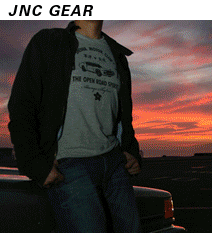
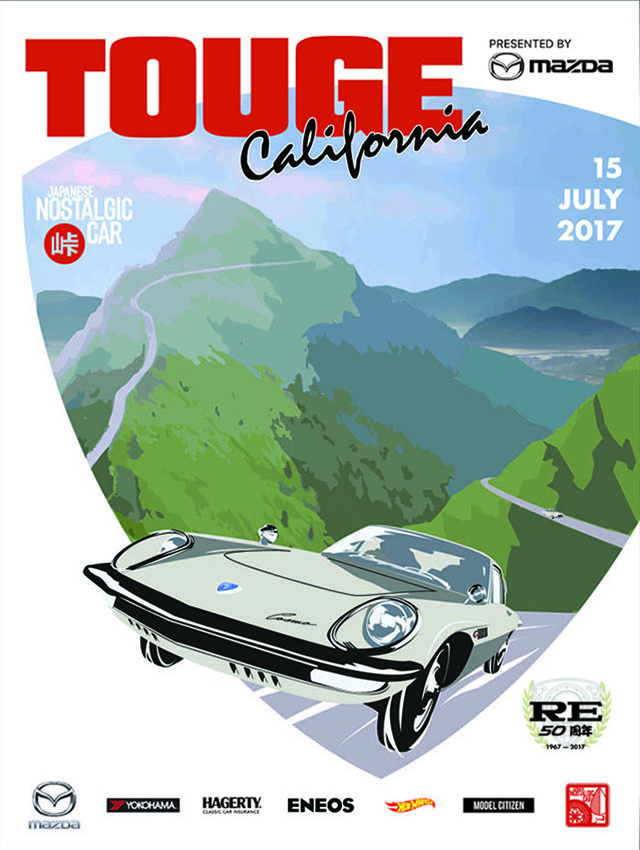
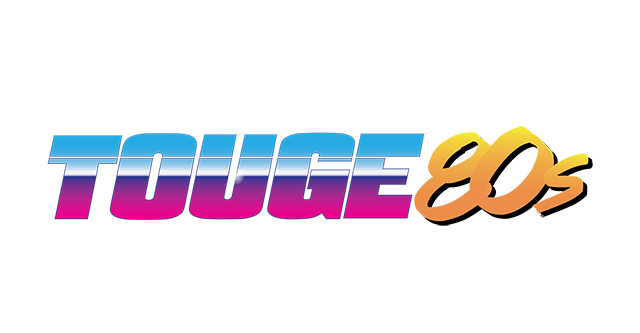

Wow, great post. That was very interesting history. Checking your website before I start work is a joy every morning.
Thanks, Myron! Glad you enjoy these articles!
Cool post. And another place for me to see in Japan.
(We have many A & W’s here in Canada).
I still want to visit this part of Japan. But how does one go to Japan and NOT spend most of their time in Tokyo and Osaka?
Love that RX-7!! I want to think it was an original Okinawa-market car ‘cuz those wheels were never available in the US, but they could easily have been swapped on. I heard old Mazdas, especially rotaries, are really rare in Japan. Great post! And what a curious place.
back in the day a marine based in pendleton was selling his celica lb okinawa car. was rhd but had usa spec bumpers!
On the Ratsun site a few years ago there popped up a Datsun RL411 with a high number prefex to the VIN. [My memory fails me but it was not the “6” prefex for the station wagon, possible a 7 or 9], The engine compartment tag listed it as I recall as a 1969 model. Fairly obvious to me that it was that rarity, a left hand drive JDM vehicle made for the Okinawa market. Likely bought and returned to the states by a GI.
I lived on Kadena AFB from 83-91, I was lucky to see some of the greatest cars on a daily bases growing up there. like the article said humidity and salt takes its tolls on the cars on the island, growing up we had new rides about every 3 yrs. due to JCI inspections and rust issues.
Natsukashi! I was there from ’92 to ’94 and that is how I got into JNCs. I had a 2nd gen. Prelude, R30, and CBR400RR and spent a lot of time on the road. It doesn’t seem like 20 years ago that I was watching street racing outside Kadena, seeing AE86s push it to the limits, and sometimes beyond near Ryukyu Mura (anybody remember the name for this place?), or listening to the virtual symphony at Henza.
Uber cool post. Now I want to live in Okinawa.
Its been more than a decade since I lived south of Okinawa and would travel up to Okinawa Honto on business trips. I wonder if people still drift at Aja Port and drag along the landing strip on 58. I recall online discussions about the MPs were cracking down on it a few years ago. There are some decent touge areas, but Nago “Circuit” sucks! Its just a big paved parking lot.
I currently live in Okinawa and have captured many JNC’s with my camera. The car culture is alive and kicking here, but not like what you would see in mainland. Check out my photos from a few shows here.
http://www.flickr.com/photos/62701002@N05/sets/72157639475182594/
Nice pix – thanks for sharing!
So, from what I’m reading about the salt and humidity, how does one keep a car from returning to nature over 40 years there?
If there’s some secret, it would certainly be a boon to everyone.
Thanks Randy. I’m not really sure how the locals keep their cars from rusting. It’s one of those unsolved mysteries. My AE86 came from the mainland rust free and during the two years I’ve owned her, I’ve noticed a couple spots of rust developing.
Can you imagine going on a bender at a friend’s house, waking up the next day – still bleary – and, “Hey – what the ****’s with everybody driving on the wrong side of the road?!”
🙂